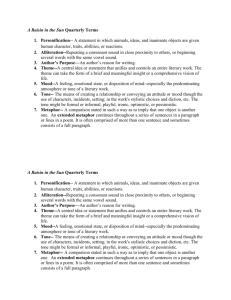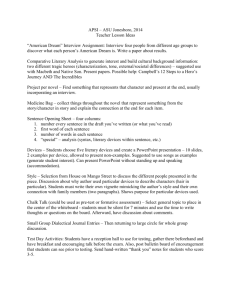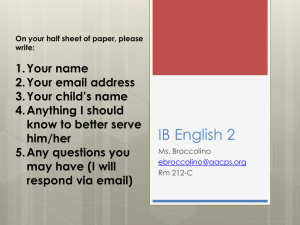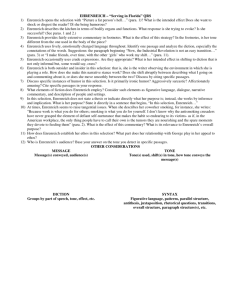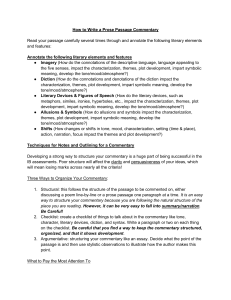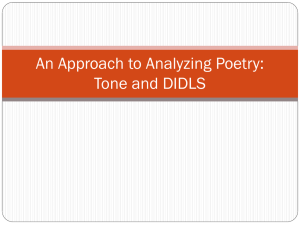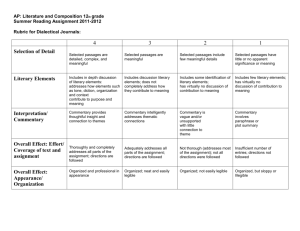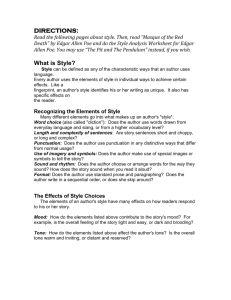BEDFORD DAYS DAZE
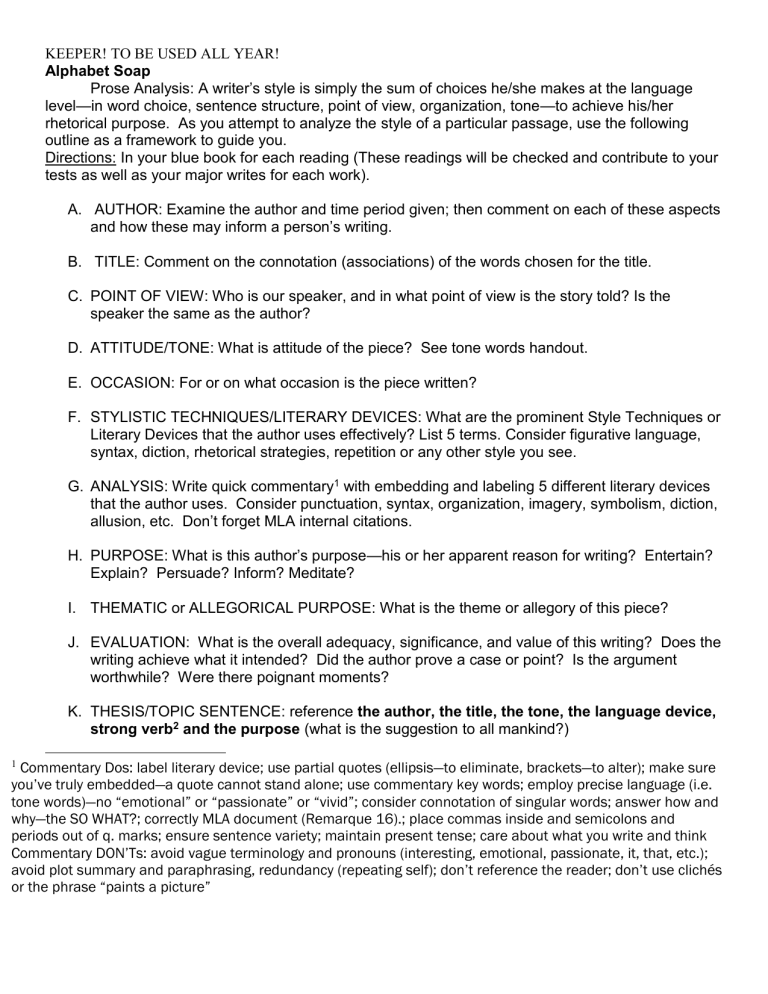
KEEPER! TO BE USED ALL YEAR!
Alphabet Soap
Prose Analysis: A writer’s style is simply the sum of choices he/she makes at the language level
—in word choice, sentence structure, point of view, organization, tone—to achieve his/her rhetorical purpose. As you attempt to analyze the style of a particular passage, use the following outline as a framework to guide you.
Directions: In your blue book for each reading (These readings will be checked and contribute to your tests as well as your major writes for each work).
A. AUTHOR: Examine the author and time period given; then comment on each of these aspects and how these may inform a person’s writing.
B. TITLE: Comment on the connotation (associations) of the words chosen for the title.
C. POINT OF VIEW: Who is our speaker, and in what point of view is the story told? Is the speaker the same as the author?
D. ATTITUDE/TONE: What is attitude of the piece? See tone words handout.
E. OCCASION: For or on what occasion is the piece written?
F. STYLISTIC TECHNIQUES/LITERARY DEVICES: What are the prominent Style Techniques or
Literary Devices that the author uses effectively? List 5 terms. Consider figurative language, syntax, diction, rhetorical strategies, repetition or any other style you see.
G. ANALYSIS: Write quick commentary 1 with embedding and labeling 5 different literary devices that the author uses. Consider punctuation, syntax, organization, imagery, symbolism, diction, allusion, etc. Don’t forget MLA internal citations.
H. PURPOSE: What is this author’s purpose—his or her apparent reason for writing? Entertain?
Explain? Persuade? Inform? Meditate?
I. THEMATIC or ALLEGORICAL PURPOSE: What is the theme or allegory of this piece?
J. EVALUATION: What is the overall adequacy, significance, and value of this writing? Does the writing achieve what it intended? Did the author prove a case or point? Is the argument worthwhile? Were there poignant moments?
K. THESIS/TOPIC SENTENCE: reference the author, the title, the tone, the language device, strong verb 2 and the purpose (what is the suggestion to all mankind?)
1 Commentary Dos: label literary device; use partial quotes (ellipsis—to eliminate, brackets—to alter); make sure you’ve truly embedded—a quote cannot stand alone; use commentary key words; employ precise language (i.e. tone words)—no “emotional” or “passionate” or “vivid”; consider connotation of singular words; answer how and why—the SO WHAT?; correctly MLA document (Remarque 16).; place commas inside and semicolons and periods out of q. marks; ensure sentence variety; maintain present tense; care about what you write and think
Commentary DON’Ts: avoid vague terminology and pronouns (interesting, emotional, passionate, it, that, etc.); avoid plot summary and paraphrasing, redundancy (repeating self); don’t reference the reader; don’t use clichés or the phrase “paints a picture”
KEEPER! TO BE USED ALL YEAR!


